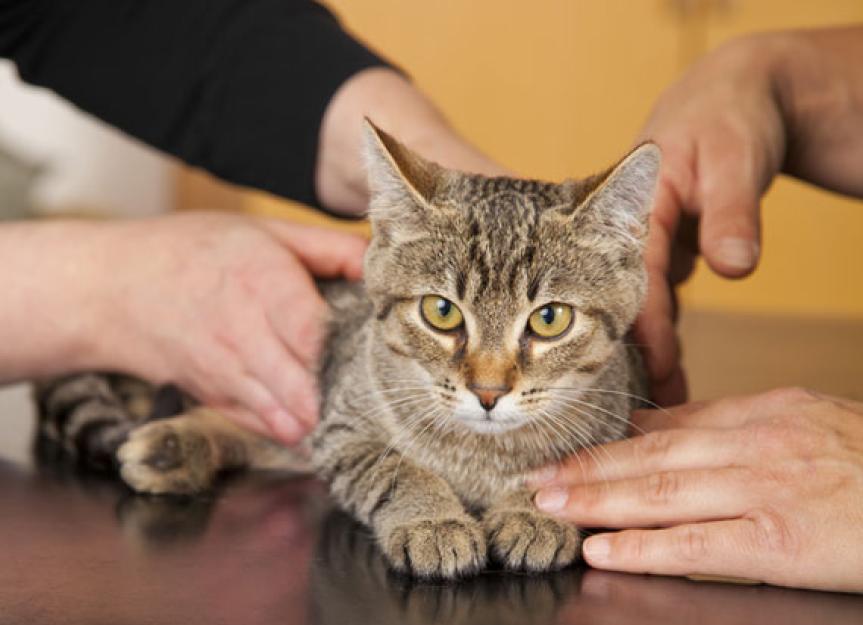A Better Method for Diagnosing Kidney Disease in Pets
Chronic kidney disease and failure is common in older pets; it is a leading cause of death in geriatric cats. Although eventually fatal, the progression of the disease can be slowed by dietary and medical management. An earlier diagnosis has the potential for extending the life of these patients.
A newly identified chemical in the blood can detect impending kidney failure 17 months earlier than traditional blood tests. This may have a significant impact on the length and quality of the life of pets stricken with kidney disease and failure.
A New Blood Biomarker
Traditional blood work in pets has focused on levels of particular metabolic products, enzymes, and proteins for diagnosing disease. New technology has allowed for the ability to identify smaller molecules associated with medical conditions. Research identifying these blood “biomarkers” is revolutionizing medical diagnosis.
Many of you, especially those of you my age, are familiar with blood troponin levels for diagnosing a heart attack when human patients are experiencing minor symptoms that could actually be confused with simple “heartburn.” Troponin is a complex protein that is essential for heart function. Elevation of this biomarker in the blood indicates evidence of a cardiac event; i.e., a heart attack.
Researchers at Oregon State University, IDEXX laboratories, and Hill’s Pet Nutrition have identified a blood marker that can detect kidney failure in cats much earlier than present methods. The biomarker is called SDMA, short for symmetric dimethylarginine. Thirty-two healthy, but older, cats were used for the study. The test correctly identified those with kidney disease 17 months earlier than present blood markers, blood urea nitrogen or BUN and creatinine.
Blood creatinine levels are dependent on lean body mass. A skinny cat in renal failure may actually have normal blood creatinine levels and the diagnosis of kidney failure could be missed. SDMA is not influenced by body muscle mass.
BUN and creatinine are both breakdown products of protein metabolism that rise when kidney function between both kidneys falls to 75 percent of total normal function. That means we presently diagnose kidney disease when there is only 25 percent functional capacity between both kidneys. That is why the life expectancy of these pets is so short after the diagnosis. It is often too late for therapeutic dietary intervention to prolong kidney life.
Early dietary intervention has been proven to prolong the life patients with kidney disease. Diets that include the following can slow the progression of kidney dysfunction:
- Very low levels of phosphorus
- Variable amounts of protein to control symptoms and maintain muscle mass
- DHA and EPA omega-3 fatty acids from fish oil
- L-carnitine to promote more effective fat utilization for energy
- Medium chain fatty acids (coconut oil) that are immediately used for energy and spare protein
Early detection of kidney disease with SDMA will mean earlier dietary intervention. Earlier treatment can extend the life of these pets and improve the quality of that time. The same researcher presented an abstract at the American College of Veterinary Internal Medicine 2014 conference that showed the same early diagnosis in dogs as well.
Unfortunately, the SDMA screen is not yet commercially available. When IDEXX does make it available, it can be used as a yearly, reliable screening test for kidney failure that you and your veterinarian can use to monitor the health of your geriatric pet.
Update:
Last week Idexx labs announced that starting this summer, SDMA will be added to routine blood panels for cats and dogs. Idexx is not charging more for the panels that include SDMA, so veterinarians and owners will not be paying extra for this new information. I am really excited by this news, because getting dogs and cats on an appropriate phosphorus restricted diets sooner may have a significant impact on the quality and length of life for these pets.

Dr. Ken Tudor
Source
J.A. Hall, M. Yerramilli, E. Obare, M. Yerramilli, S. Yu, D.E. Jewell.比较对称的di的血清浓度methylarginine and creatinine as kidney function biomarkers in healthy geriatric cats fed reduced protein foods enriched with fish oil, L-carnitine, and medium-chain triglycerides.The Veterinary Journal, 2014; DOI:10.1016/j.tvjl.2014.10.021
Image:foto Arts/Shutterstock
Help us make PetMD better
Was this article helpful?
